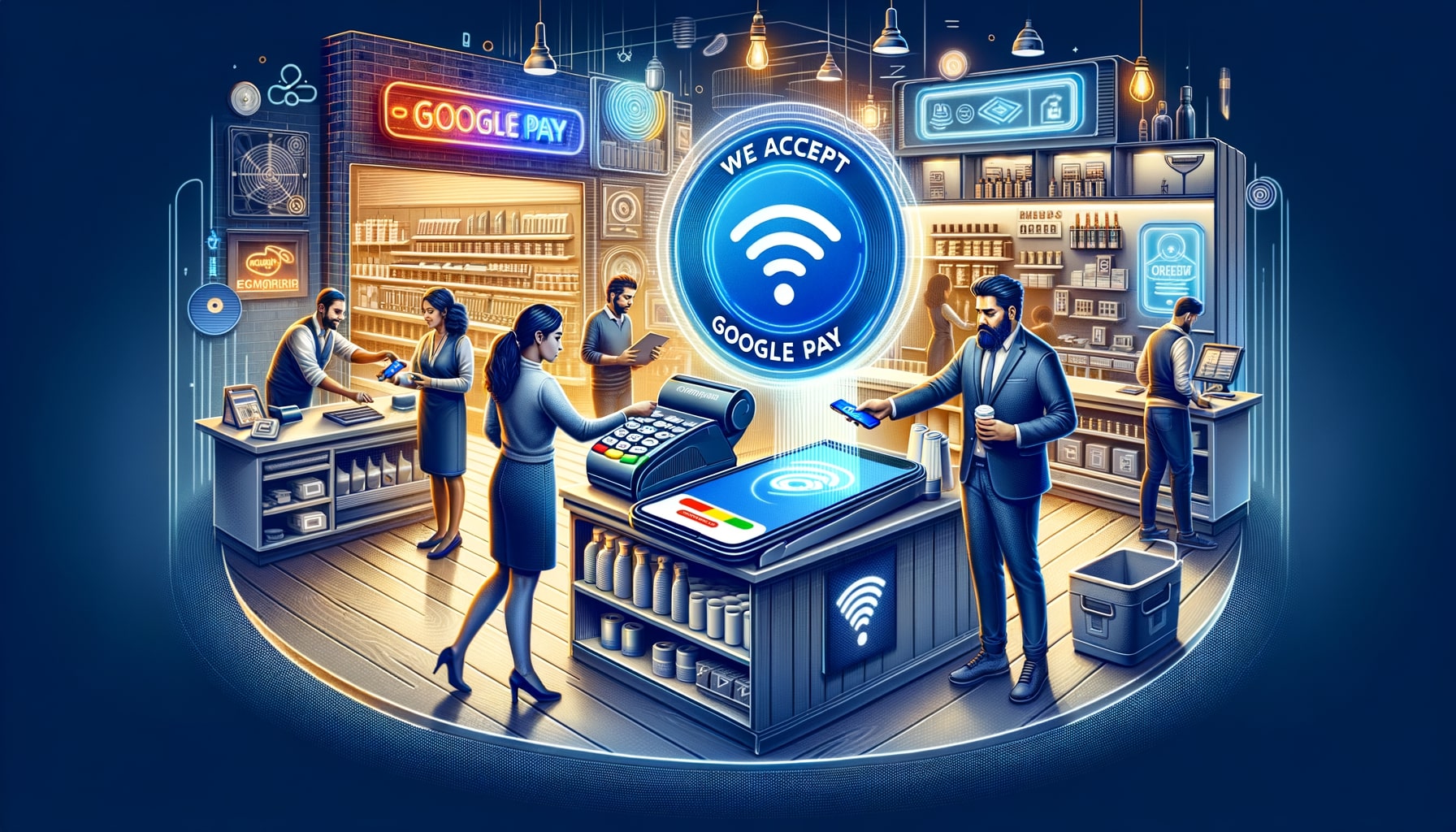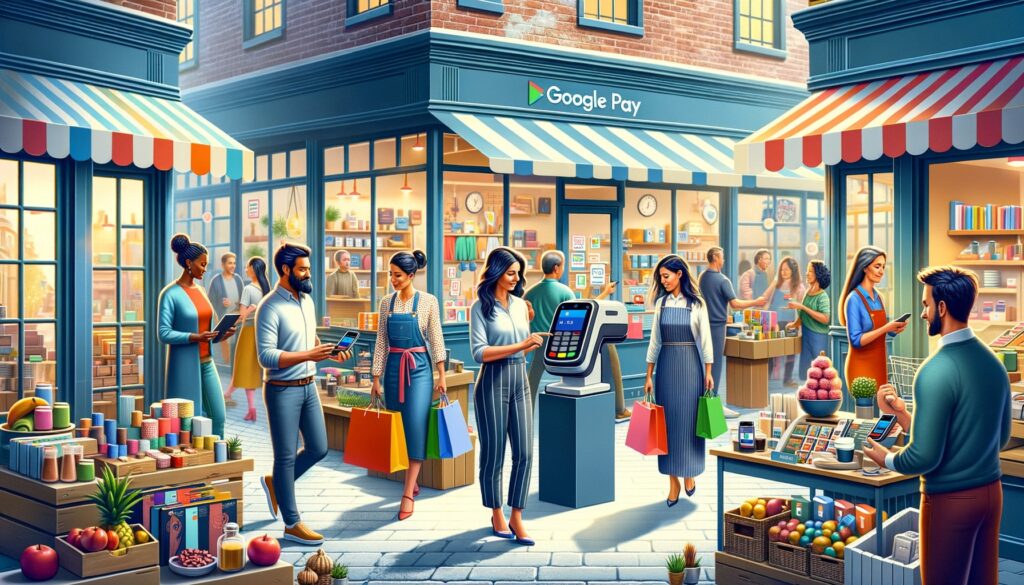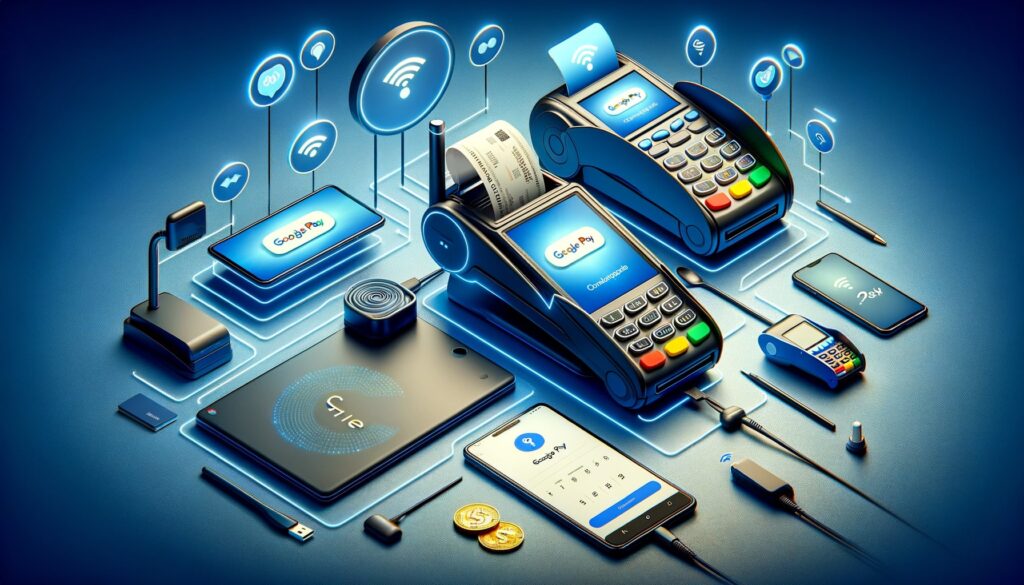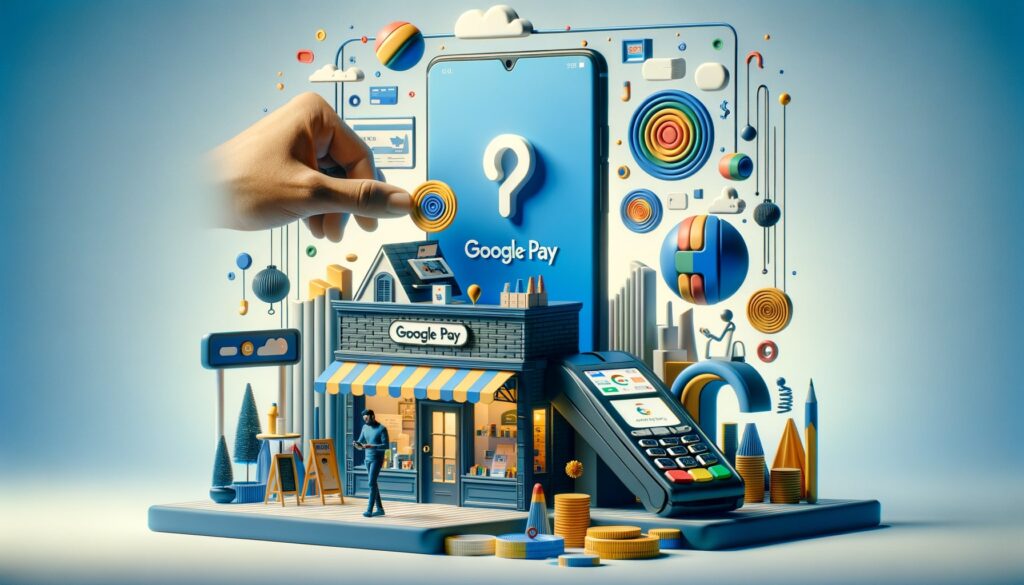
By Harriet Forster October 14, 2024
In today’s fast-paced digital world, offering convenient and secure payment options is crucial for businesses of all sizes. Google Pay is one such solution that enables businesses to accept contactless payments easily. As more customers move towards cashless transactions, particularly in the wake of the COVID-19 pandemic, Google Pay has become an increasingly popular payment option for both in-store and online purchases.
This article provides a comprehensive guide on how to accept Google Pay at your business. We’ll cover everything from the benefits of using Google Pay to the equipment you’ll need, setting up the payment system, security considerations, and frequently asked questions. By the end of this guide, you’ll be fully prepared to offer Google Pay as a payment option at your business, enhancing both customer satisfaction and operational efficiency.
What is Google Pay?
Google Pay is a mobile payment platform developed by Google. It allows users to store their credit and debit card information in a secure digital wallet on their mobile devices, such as smartphones and smartwatches. With Google Pay, customers can make contactless payments in-store, online, and through apps using NFC (near-field communication) technology. Google Pay simplifies the checkout process by allowing users to tap their devices on NFC-enabled point-of-sale (POS) terminals to make payments.
In addition to contactless payments, Google Pay can store loyalty cards, gift cards, and even event tickets, making it a comprehensive solution for customers.
Benefits of Accepting Google Pay at Your Business

There are several reasons why integrating Google Pay into your payment system can be beneficial for your business:
1. Faster Transactions
Google Pay offers a quick and seamless payment experience. With a simple tap of the customer’s mobile device, transactions are completed faster than traditional methods like swiping or inserting a card. This can reduce checkout times, improve customer satisfaction, and help manage queues during busy periods.
2. Enhanced Security
Google Pay provides robust security measures, including encryption and tokenization. Instead of sharing a customer’s actual card details with merchants, Google Pay generates a unique encrypted token for each transaction, ensuring that sensitive data remains secure. Additionally, Google Pay transactions are protected by the user’s phone lock, whether it’s a PIN, password, fingerprint, or face recognition.
3. Increased Customer Convenience
Many consumers now prefer contactless payments for their convenience, hygiene, and speed. By offering Google Pay, you cater to a growing demographic of tech-savvy customers who are accustomed to using mobile wallets. Offering more payment options increases the likelihood that customers will complete their purchases.
4. Reduced Risk of Chargebacks
Google Pay’s tokenization technology helps protect merchants from fraud and unauthorized transactions. By using Google Pay, you can potentially reduce the risk of chargebacks, which occur when a customer disputes a transaction with their card issuer.
5. Attracting New Customers
Adopting modern payment methods like Google Pay can make your business more attractive to younger generations, particularly millennials and Gen Z customers. These consumers are more likely to patronize businesses that offer convenient, tech-forward payment options.
Equipment Required to Accept Google Pay

To accept Google Pay, you need to ensure that your business is equipped with the necessary hardware and software. Here’s what you’ll need:
1. NFC-Enabled Point-of-Sale (POS) Terminal
Google Pay requires NFC technology to process contactless payments. If you don’t already have an NFC-enabled POS terminal, you’ll need to upgrade your current system. Many modern POS systems come with built-in NFC capabilities, allowing you to accept Google Pay along with other mobile wallet payments such as Apple Pay.
2. Payment Processor
You need to choose a payment processor that supports Google Pay. Many major processors, such as Square, Stripe, and PayPal, already offer Google Pay integration as part of their service. Check with your processor to ensure they support Google Pay transactions and review their fees for mobile wallet payments.
3. Software Compatibility
Your POS software must also support Google Pay. Most modern POS systems, like Clover, Shopify, and Lightspeed, offer built-in integration with Google Pay. If you’re not sure whether your software is compatible, contact your POS provider for assistance.
How to Set Up Google Pay at Your Business

Setting up Google Pay is a straightforward process that involves a few key steps. Follow this guide to get started:
Step 1: Ensure Your POS System Supports NFC
First, confirm that your POS terminal is NFC-enabled. NFC (near-field communication) is the technology that allows contactless payments, including Google Pay, to work. If your current terminal does not support NFC, you will need to upgrade your equipment. Many modern payment terminals from providers like Verifone, Ingenico, and Clover come with NFC functionality built-in.
Step 2: Choose a Payment Processor That Supports Google Pay
Next, select a payment processor that supports Google Pay. Many leading payment processors already offer Google Pay integration, so check whether your existing provider supports it. Compare transaction fees, customer support, and ease of integration when choosing a payment processor.
Step 3: Integrate Google Pay with Your POS System
After selecting a payment processor, you need to integrate Google Pay into your POS system. This is usually done through your payment processor’s dashboard, where you can enable Google Pay as a payment method. Some POS systems may require you to update your software or download a specific plugin to enable Google Pay functionality.
Step 4: Test the System
Before going live, it’s essential to test your POS system to ensure that Google Pay transactions are processed correctly. Use your own smartphone or ask an employee to make a small test purchase using Google Pay. This will help you verify that the payment system is working smoothly.
Step 5: Train Your Employees
Your staff should be familiar with how Google Pay transactions work. Train your employees on how to prompt customers to use Google Pay, troubleshoot any issues that arise, and handle refunds or adjustments if necessary.
Step 6: Promote Google Pay to Your Customers
Once everything is set up, let your customers know that you now accept Google Pay. Display Google Pay logos at your checkout counters, on your website, and on social media. Highlight the convenience and security of Google Pay to encourage customers to use it.
Security and Compliance Considerations
Google Pay provides built-in security features, but as a merchant, you are still responsible for maintaining compliance with industry regulations and ensuring the security of your customers’ data. Here are some important considerations:
1. PCI Compliance
Even though Google Pay uses tokenization to protect card data, you must still comply with the Payment Card Industry Data Security Standard (PCI DSS). PCI compliance ensures that your business follows best practices for protecting cardholder data. This includes maintaining secure networks, encrypting sensitive data, and regularly monitoring your payment systems for vulnerabilities.
2. Data Privacy
Make sure that your business does not store sensitive customer information, such as credit card numbers or personal data. Google Pay keeps this information secure by generating one-time-use tokens, but you should also follow strict privacy policies to protect customer data.
3. Fraud Prevention
Google Pay’s tokenization and encryption help reduce fraud risk, but it’s still important to implement fraud prevention measures. Consider requiring additional verification for high-value purchases, such as customer signatures or photo IDs. Educate your staff on how to spot suspicious behavior and avoid processing potentially fraudulent transactions.
Frequently Asked Questions (FAQs)
Q1: How does Google Pay work at a business?
Google Pay uses NFC technology to facilitate contactless payments. Customers tap their mobile device on your NFC-enabled POS terminal, and the transaction is processed securely using encrypted tokenized data.
Q2: Is Google Pay secure for businesses?
Yes, Google Pay is secure for both businesses and customers. It uses tokenization, which replaces sensitive card details with encrypted tokens during transactions, minimizing the risk of fraud.
Q3: What equipment do I need to accept Google Pay?
You need an NFC-enabled POS terminal and a payment processor that supports Google Pay transactions. Most modern POS systems and processors offer Google Pay integration.
Q4: Are there fees for accepting Google Pay?
Transaction fees for Google Pay are similar to traditional credit card processing fees, but they vary depending on your payment processor. Check with your provider for specific details on fees.
Q5: How do I promote Google Pay at my business?
Promote Google Pay by displaying Google Pay logos at checkout, adding it to your website’s payment options, and mentioning it in your marketing materials. Let customers know that you accept Google Pay for a fast, contactless payment experience.
Conclusion
Accepting Google Pay at your business is a smart move in today’s increasingly digital world. It provides a fast, secure, and convenient payment option for your customers, which can help improve their overall experience. By setting up Google Pay, you’ll also reduce the risk of fraud and stay competitive in a market where mobile payments are growing rapidly.
By following the steps outlined in this guide, you can easily integrate Google Pay into your payment system and start accepting contactless payments. Whether you run a brick-and-mortar store, an online business, or both, offering Google Pay can help you meet the expectations of today’s tech-savvy customers, while streamlining your operations. Make sure to train your staff, promote the new payment method, and follow security best practices to ensure smooth transactions and customer satisfaction.